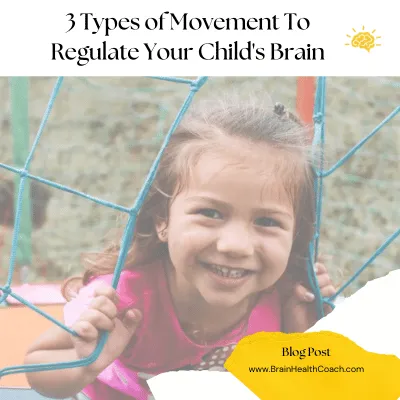Blog
Inspiration In Every Post

3 Types of Movement That Help Regulate Your Child's Brain
My brain health journey began when my child's preschool teachers approached me and told me that I may want to have my 5-year old child evaluated. Something just wasn't right. After evaluations from three doctors, we received four diagnoses; Sensory Processing Disorder (SPD), Attention Deficit Disorder (ADD), Attention Deficit Disorder Hyperactivity (ADHD), and Asperger's Syndrome, not including "normal" from the pediatrician.
With each diagnosis, I kept asking how and why? And not one time did any of the doctors mention the brain. It wasn't until I started doing my research that I began to learn more about brain health and how our brains play a critical part in how we operate in our day-to-day lives.
"I took my child to three doctors and got three different diagnoses." -Daneen West
The Role of Primitive Reflexes
We are all born with primitive reflexes that can be thought of as the training wheels of a child's motor development.
Primitive reflexes are automatic movements that are present in infants and young children, but should disappear as a child develops. These reflexes are controlled by the brainstem and spinal cord, rather than the higher-level brain regions responsible for voluntary movement.
Turns out, my child had nine primitive reflexes retained creating challenges at home and at school.
Could you too have primitive reflex left over from infancy?
Have you ever noticed how easily you startle when you're riding shotgun in a car, especially when driving through heavy traffic? And what about sudden sounds, like a doorbell, a barking dog, or an alarm? Do you find yourself jumping or feeling on edge?
Believe it or not, these reactions could be due to your Moro primitive reflex still being present in your body. That's right - primitive reflexes that persist beyond infancy, can cause difficulties with coordination, balance, fine motor control, and even focus. What? Squirrel!
Do you struggle to sit through a dinner with the urge to wiggle or get up? Or find it hard to stay still for an extended period, like during a theatre performance or to simply sit and read a book? This could be due to your Tonic Labyrinthine primitive reflex still being present.
Supporting Brain Health Through Rewiring
The good news is that the brain can rewire and it's not too late to integrate these reflexes and improve your quality of life. There are specific exercises designed to help individuals integrate primitive reflexes and improve their overall functioning, including academic and social skills.
Brain Balance is a fantastic program that uses a combination of sensory-motor exercises, academic activities, and nutrition to support the development of neural pathways and strengthen the brain-body connection.
They did not label those 5-year old behaviors, but provided an exercise intense treatment plan many years ago and I greatly appreciate all the support they have provided over the years. Over the years, they have provided a personalized approach to meet the unique needs of all my children, and I too enrolled last year when they launched their adult program.
Let's just say, I can now teach my kids to drive without jumping thru the window.
Brain Balance reminded me of the nine primitives that I first learned about at University in an Intro to Childcare course.
By understanding the impact of these primitive reflexes on my child's "personality" and behavior, I was able to take an active role in addressing the root case.
Get Moving to Support Healthy Development
Instead of medication, we chose to follow the Brain Balance program that promoted the integration of my child's primitive reflexes through targeted exercise.
Once these specific exercises were performed repeatedly over several weeks or months, the primitive reflex disappears allowing for the body to proceed forward in its development.
Engaging in physical activity triggers the release of neurotransmitters such as dopamine and endorphins, which can lead to improved cognitive function, increased ability to focus, and positive emotions in the body. Moreover, an increase in heart rate during exercise promotes the growth of the hippocampus, a region of the brain involved in learning and memory.
Now, movement has become something that we all do each morning. If we're running super late for school and work in the morning, we still make sure that we make our movement a priority and make it happen, and it must be a predictable activity that will occur each morning. We make sure that we celebrate every move, big or small; those high fives are essential; saying good job and encouraging them to make improvements have become very important in our morning routine and set the mood for the entire day.
Here are a few movements that you can do each morning before school and work.
1. Jumping Rope

Did you know jumping rope or skipping can make you smarter? Yes, you read that correctly. Jumping rope helps develop your brain's right and left hemispheres. Which can help children with reading skills, increase memory, and makes them mentally more alert. All the things that you're child would benefit from at school.
2. Running

Having a child with ADHD or a child with extra energy run first thing in the morning has proven to decrease the symptoms that are associated with ADHD. Having the child run first thing in the morning has also proven to be better than having the child perform exercise throughout the day.
3. Yoga

Allowing your child to do yoga during the morning can help them feel more in control of their bodies. Deep breathing exercises can help them learn how to self-regulate and control their big feeling through breathing exercises.
I've noticed that since we've started making little changes in our daily routines and incorporating movement into our morning routines, my child's overall attitude, energy levels, and focus at school have improved. My child is no longer needing special education classes, an IEP, or a 504 plan for academic assistance. If you're reading this and you have a child that sounds much like my child, take some time to research, try a few things, take away foods, or add exercises. Start by making small changes, and see if you notice any significant changes.
To learn more about my current coaching offers visit the Coaching Packages page.
©brain health coach | ALL RIGHTS RESERVED | Privacy | TERMS & CONDITIONS

